The first meeting of brethren who wished to form a Masonic Lodge in Brisbane, Australia under the Scottish Constitution was called by “public advertisement” and was to be held in the Masonic Hall, Queen Street, Brisbane with the blessing of sister lodges. The meeting was held on Monday, 12 April 1864. Bro. W.M. Boyce was called to the chair for the occasion.
By: Brother Kenneth C. Jack, Past Master, Lodge St. Andrew, No. 814, Pitlochry
Lodge St. Andrew No. 6, United Grand Lodge of Queensland
(formerly Lodge St. Andrew No. 435 (S.C.)
The first important motion was to open a lodge in Brisbane under the auspices of the Grand Lodge of Scotland. The motion was proposed by Bro. J.Y. Bonar and seconded by Bro. W. Murray. The motion was of course carried.
The lodge was to be called Lodge St. Andrews of Queensland, a title proposed by Bro. W.C. Whitehill, and seconded by Bro. R. MacGavin, and this too, was carried unanimously.
However, in the minutes of the Lodge dated 30 November 1865, the name of the Lodge is given as Lodge St. Andrew, without any explanation for the change.
It seems the former title was a misprint, and it should have read Lodge St. Andrew all along. A resolution was also carried to apply to the Provincial Grand Lodge of Scotland in Sydney for dispensation to form the Lodge.

Dispensation was subsequently granted by the Provincial Grand Lodge of Scotland in Sydney and was read at a meeting of the Lodge on 27 May 1864 by Bro. W.M. Boyce of North Australian Lodge, No. 796 (E.C.).
He had signed the petition for the Lodge. Lodge St. Andrew, No.435, on the roll of the Grand Lodge of Scotland was subsequently inaugurated.
Bro. J.Y. Bonar was installed into the chair of the Lodge by said Bro. W.M. Boyce, as were his office-bearers: consisting of Senior and Junior Warden, Chaplain, Treasurer, Secretary, Senior and Junior Deacon, Inner Guard, and Tyler.
The Lodge proceeded to carry out its work, and in September 1864, Bro. W.M. Boyce was installed as Master.
In January 1865, the Grand Lodge of Scotland agreed to establish Queensland, Australia, as one of their provinces, and requested that the Lodge submit a nominee as Provincial Grand Master. The Lodge nominated Bro. Boyce.
In August 1865, a new Masonic Temple was erected at the corner of Ann and Albert Streets, Brisbane, the cornerstone of which was laid at “high noon” by the District Grand Master of the English constitution, assisted by the Provincial Grand Masters of the Scottish and Irish constitutions. Two hundred Masons and their friends were present.
In April 1866, the charter confirming Bro. W.M. Boyce as District Grand Master in the Colony of Queensland, which had been issued by the Grand Lodge of Scotland on 2 August 1865, was received in Queensland; an indication of time and distance in those days.
In 1868, the Lodge introduced “the antient workings” which were reported as those according to the ritual practiced in Scotland, and which were adapted successfully.
By 1879, Lodge St. Andrew, No. 435, (S.C.) operated under the District Grand Lodge of Scottish Freemasonry in Queensland.
In November 1907, the last District Grand Master, Bro. Thomas S. Burstow was installed, and held this office until April 1920, when the Queensland Grand Lodge was formed under one Grand Master.
On the formation of the Queensland Grand Lodge, Lodge St. Andrew, No. 435, surrendered its Scottish Charter, and in January 1921, received a warrant placing them No. 5, on the roll of that Grand Lodge.
The Lodge subsequently became No. 6 on the roll of the United Grand Lodge of Queensland.
As a former Scottish Lodge, they are entitled to continue to use Scottish ritual and customs.
[This is a brief summary of the history of the Lodge, gleaned from the booklet: “One hundred and twenty-five years’ history 1864-1989,” produced by the Lodge in 1989]
Article by: Kenneth C. Jack
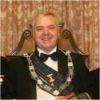
Kenneth C. Jack FPS is an enthusiastic Masonic researcher/writer from Highland Perthshire in Scotland.
He is Past Master of a Craft Lodge, Past First Principal of a Royal Arch Chapter, Past Most-Wise Sovereign of a Sovereign Chapter of Princes Rose Croix.
He has been extensively published in various Masonic periodicals throughout the world including: The Ashlar, The Square, The Scottish Rite Journal, Masonic Magazine, Philalethes Journal, and the annual transactions of various Masonic bodies.
Kenneth is a Fellow of the Philalethes Society, a highly prestigious Masonic research body based in the USA.
Recent Articles: Kenneth C. Jack
 Observations on the History of Masonic Research Archaeology is often associated with uncovering ancient tombs and fossilized remains, but it goes beyond that. In a Masonic context, archaeology can be used to study and analyze the material culture of Freemasonry, providing insight into its history and development. This article will explore the emergence and evolution of Masonic research, shedding light on the challenges faced by this ancient society in the modern world. |
 Anthony O'Neal Haye – Freemason, Poet, Author and Magus Discover the untold story of Anthony O’Neal Haye, a revered Scottish Freemason and Poet Laureate of Lodge Canongate Kilwinning No. 2 in Edinburgh. Beyond his Masonic achievements, Haye was a prolific author, delving deep into the history of the Knights Templar and leaving an indelible mark on Scottish Freemasonry. Dive into the life of a man who, despite his humble beginnings, rose to prominence in both Masonic and literary circles, leaving a legacy that continues to inspire. |
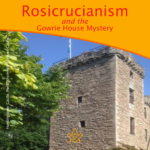 Rosicrucianism and the Gowrie House Mystery Unearth the mystifying intersections of Rosicrucianism and the infamous Gowrie House Mystery. Dive into speculative claims of sacred knowledge, royal theft, and a Masonic conspiracy, harking back to a fateful day in 1600. As we delve into this enthralling enigma, we challenge everything you thought you knew about this historical thriller. A paper by Kenneth Jack |
 Thomas Telford's Masonic Bridge of Dunkeld Of course, there is no such thing as a ‘Masonic Bridge’; but if any bridge is deserving of such an epithet, then the Bridge of Dunkeld is surely it. Designed by Scotsman Thomas Telford, one of the most famous Freemasons in history. |
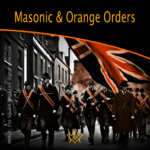 The masonic and orange orders: fraternal twins or public misperception? “Who’s the Mason in the black?” |
 Kenneth Jack's research reveals James Murray, 2nd Duke of Atholl – the 'lost Grand Master' |
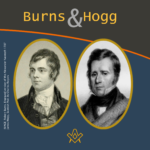 An Oration delivered to the Annual Burns and Hogg Festival, at Lodge Canongate Kilwinning, No. 2, Edinburgh, on 24 January 2018. By Bro. Kenneth C. Jack, FSAScot FPS, Past Master, Lodge St. Andrew, No. 814, Pitlochry. |
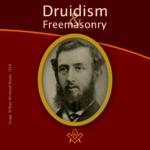 William Winwood Reade was a Scottish philosopher, historian, anthropologist, and explorer born in Crieff, Perthshire, Scotland. The following article by Kenneth Jack, provides some hints that William may have been a Freemason, but there is presently no definitive evidence he was. |
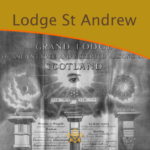 What's in a name? A brief history of the first Scottish Lodge in Australia - By Brother Kenneth C. Jack, Past Master, Lodge St. Andrew, No. 814, Pitlochry |
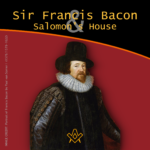 Sir Francis Bacon and Salomon’s House Does Sir Francis Bacon's book "The New Atlantis" indicate that he was a Rosicrucian, and most likely a Freemason too? Article by Kenneth Jack |
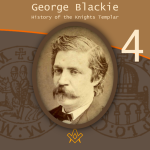 George Blackie – The History of the Knights Templar P.4 The final part in the serialisation of George Blackie's 'History of the Knights Templar and the Sublime Teachings of the Order' transcribed by Kenneth Jack. |
 George Blackie – The History of the Knights Templar P.3 Third part in the serialisation of George Blackie's 'History of the Knights Templar and the Sublime Teachings of the Order' transcribed by Kenneth Jack. |
 George Blackie – The History of the Knights Templar P.2 Second part in the serialisation of George Blackie's 'History of the Knights Templar and the Sublime Teachings of the Order' transcribed by Kenneth Jack. |
 George Blackie – The History of the Knights Templar P.1 First part in the serialisation of George Blackie's History of the Knights Templar and the Sublime Teachings of the Order – by Kenneth Jack |
 Little known as a Freemason, Bro Dr Robert ‘The Bulldog’ Irvine remains a Scottish rugby legend, and his feat of appearing in 10 consecutive international matches against England has only been surpassed once in 140 years by Sandy Carmichael. |
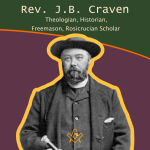 Rev. J.B. Craven: Theologian, Historian, Freemason, And Rosicrucian Scholar Archdeacon James Brown Craven is one of those unsung heroes of Scottish Freemasonry about whom very little has been previously written – here Kenneth Jack explores the life and works of this remarkable esoteric Christian. |
 Discover the powerful family of William Schaw, known as the 'Father of Freemasonry' |
 This month, Kenneth Jack invites us to look at the life of Sir William Peck; - astronomer, Freemason and inventor of the world's first electric car. A truly fascinating life story. |
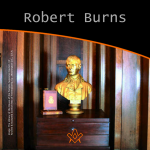 A Tribute to Scotland's Bard – The William Robertson Smith Collection With Burns' Night approaching, we pay tribute to Scotland's most famous Bard – The William Robertson Smith Collection |
 The Joy of Masonic Book Collecting Book purchasing and collecting is a great joy in its own right, but when a little extra something reveals itself on purchase; particularly with regards to older, rarer titles.. |
 Masons, Magus', and Monks of St Giles - who were the Birrell family of Scottish Freemasonry? |
 The 6th Duke of Atholl - Chieftain, Grand Master, and a Memorial to Remember In 1865, why did over 500 Scottish Freemasons climb a hill in Perthshire carrying working tools, corn, oil and wine? Author Kenneth Jack retraces their steps, and reveals all. |
 Charles Mackay: Freemason, Journalist, Writer Kenneth Jack looks at life of Bro Charles Mackay: Freemason, Journalist, Writer, Poet; and Author of ‘Tubal Cain’. |
 A Mother Lodge and a Connection Uncovered, a claim that Sir Robert Moray was the first speculative Freemason to be initiated on English soil. |
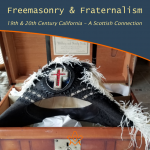 What is it that connects a very old, well-known Crieff family, with a former President of the United States of America? |
 The life of Bro. Cattanach, a theosophist occultist and Scottish Freemason |
 The Mysterious Walled Garden of Edzell Castle Explore the mysterious walled garden steeped in Freemasonry, Rosicrucianism, and Hermeticism. |
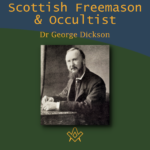 Dr. George Dickson: Scottish Freemason and Occultist Bro. Kenneth explores the life of Dr George Dickson a Scottish Freemason and Occultist |
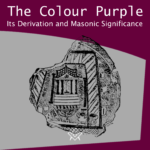 The Colour Purple - Its Derivation and Masonic Significance What is the colour purple with regards to Freemasonry? The colour is certainly significant within the Royal Arch series of degrees being emblematical of Union. |
 Bridging the Mainstream and the Fringe Edward MacBean bridging mainstream Freemasonry with the fringe esoteric branches of Freemasonry |
 Freemasonry in the Works of John Steinbeck We examine Freemasonry in the Works of John Steinbeck |
 Renegade Scottish Freemason - John Crombie Who was John Crombie and why was he a 'renegade'? |
 Scottish Witchcraft And The Third Degree How is Witchcraft connected to the Scottish Third Degree |
masonic knowledge
to be a better citizen of the world
share the square with two brothers

click image to open email app on mobile device









